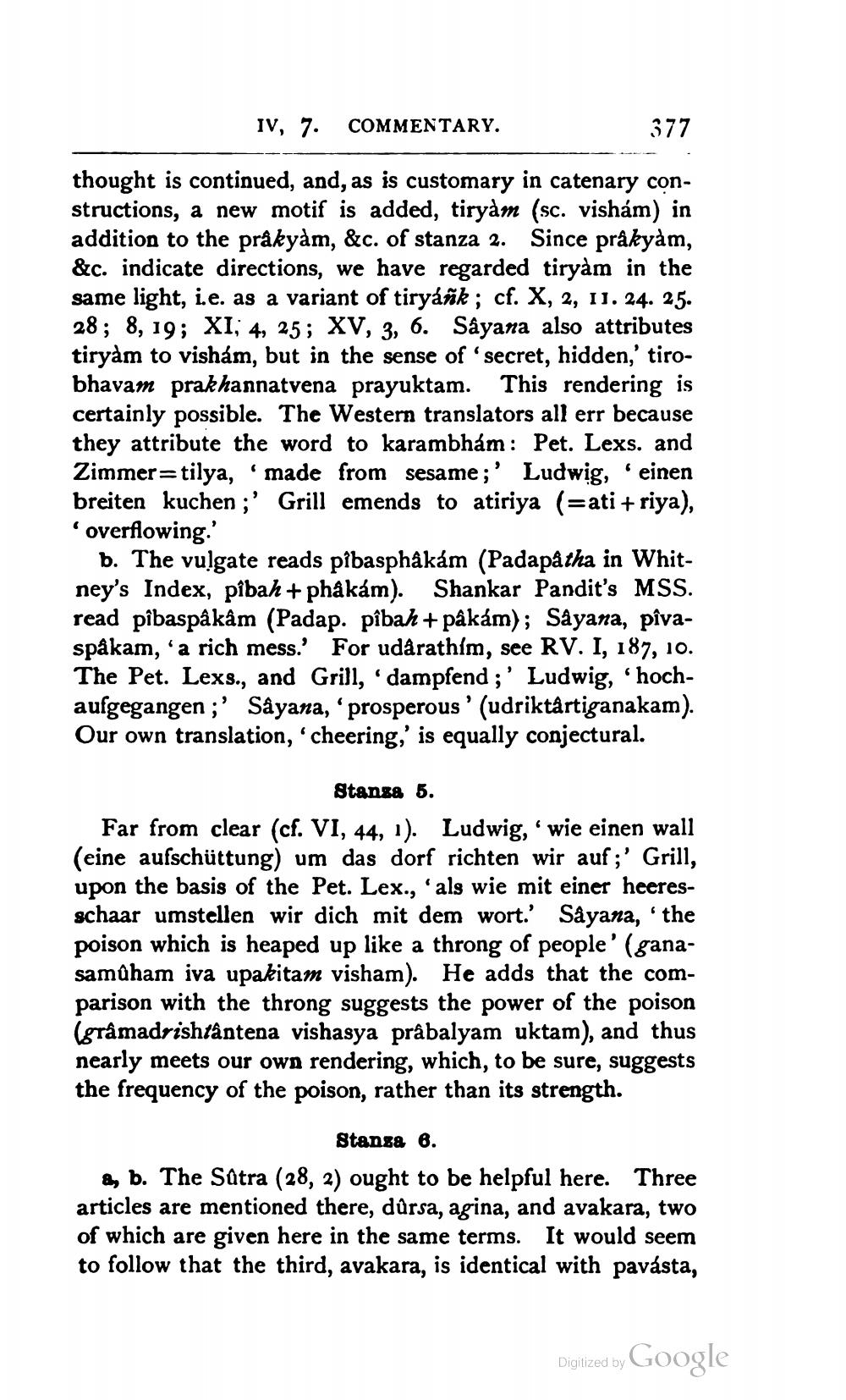________________
IV, 7. COMMENTARY.
377
thought is continued, and, as is customary in catenary constructions, a new motif is added, tiryam (sc. vishám) in addition to the prakyàm, &c. of stanza 2. Since prákyam, &c. indicate directions, we have regarded tiryàm in the same light, i.e. as a variant of tiryáñk; cf. X, 2, 11. 24. 25. 28; 8, 19; XI, 4, 25; XV, 3, 6. Sâyana also attributes tiryam to vishám, but in the sense of secret, hidden,' tirobhavam prakhannatvena prayuktam. This rendering is certainly possible. The Western translators all err because they attribute the word to karambhám: Pet. Lexs. and Zimmer=tilya, 'made from sesame;' Ludwig, einen breiten kuchen;' Grill emends to atiriya (=ati + riya), overflowing.'
b. The vulgate reads pibasphâkám (Padapåtha in Whitney's Index, pîbah + phâkám). Shankar Pandit's MSS. read pîbaspâkâm (Padap. pîbah + pâkám); Sayana, pîvaspâkam, a rich mess.' For udarathlm, see RV. I, 187, 10. The Pet. Lexs., and Grill, dampfend ;' Ludwig, 'hochaufgegangen ;' Sâyana, ‘prosperous' (udriktårtiganakam). Our own translation, cheering,' is equally conjectural.
Stanza 5. Far from clear (cf. VI, 44, 1). Ludwig, wie einen wall (eine aufschüttung) um das dorf richten wir auf;' Grill, upon the basis of the Pet. Lex., 'als wie mit einer heeresschaar umstellen wir dich mit dem wort.' Såyana, 'the poison which is heaped up like a throng of people' (ganasamtham iva upakitam visham). He adds that the comparison with the throng suggests the power of the poison (grâmadrishtåntena vishasya prâbalyam uktam), and thus nearly meets our own rendering, which, to be sure, suggests the frequency of the poison, rather than its strength.
Stansa 6. a, b. The Sätra (28, 2) ought to be helpful here. Three articles are mentioned there, dûrsa, agina, and avakara, two of which are given here in the same terms. It would seem to follow that the third, avakara, is identical with pavasta,
Digized by Google
Digitized by




